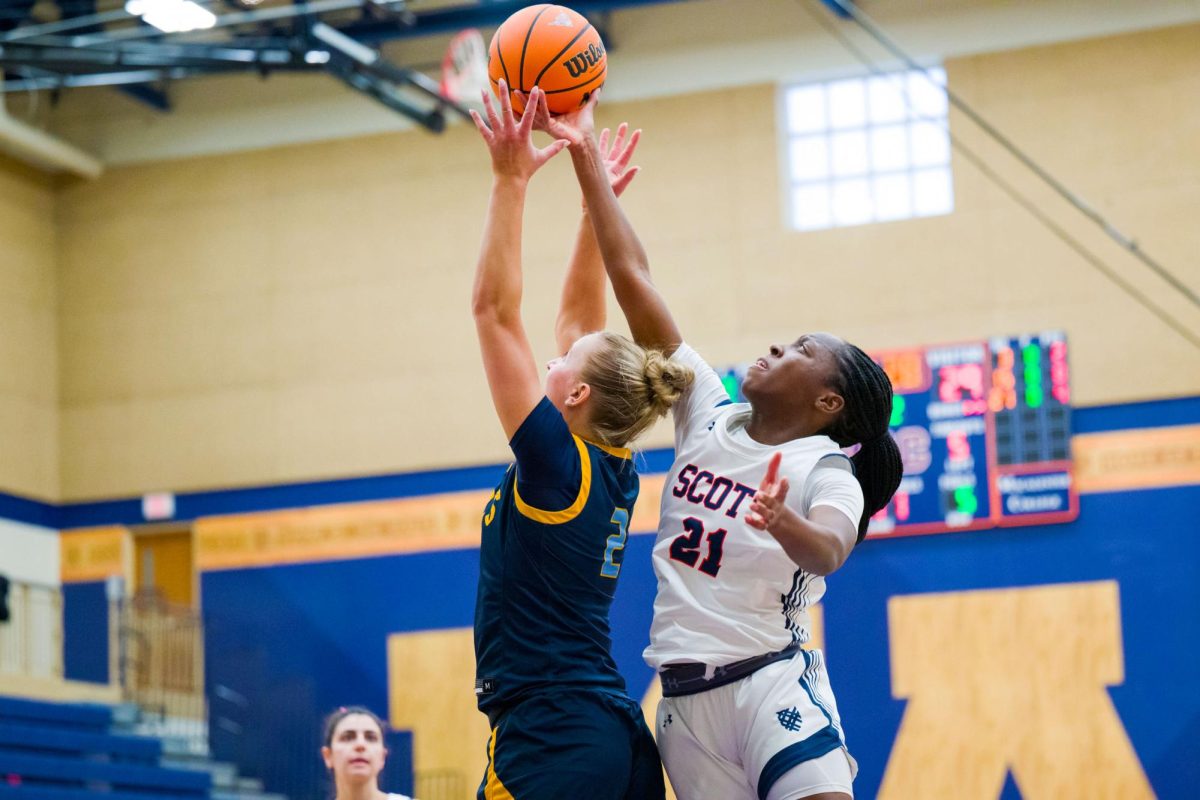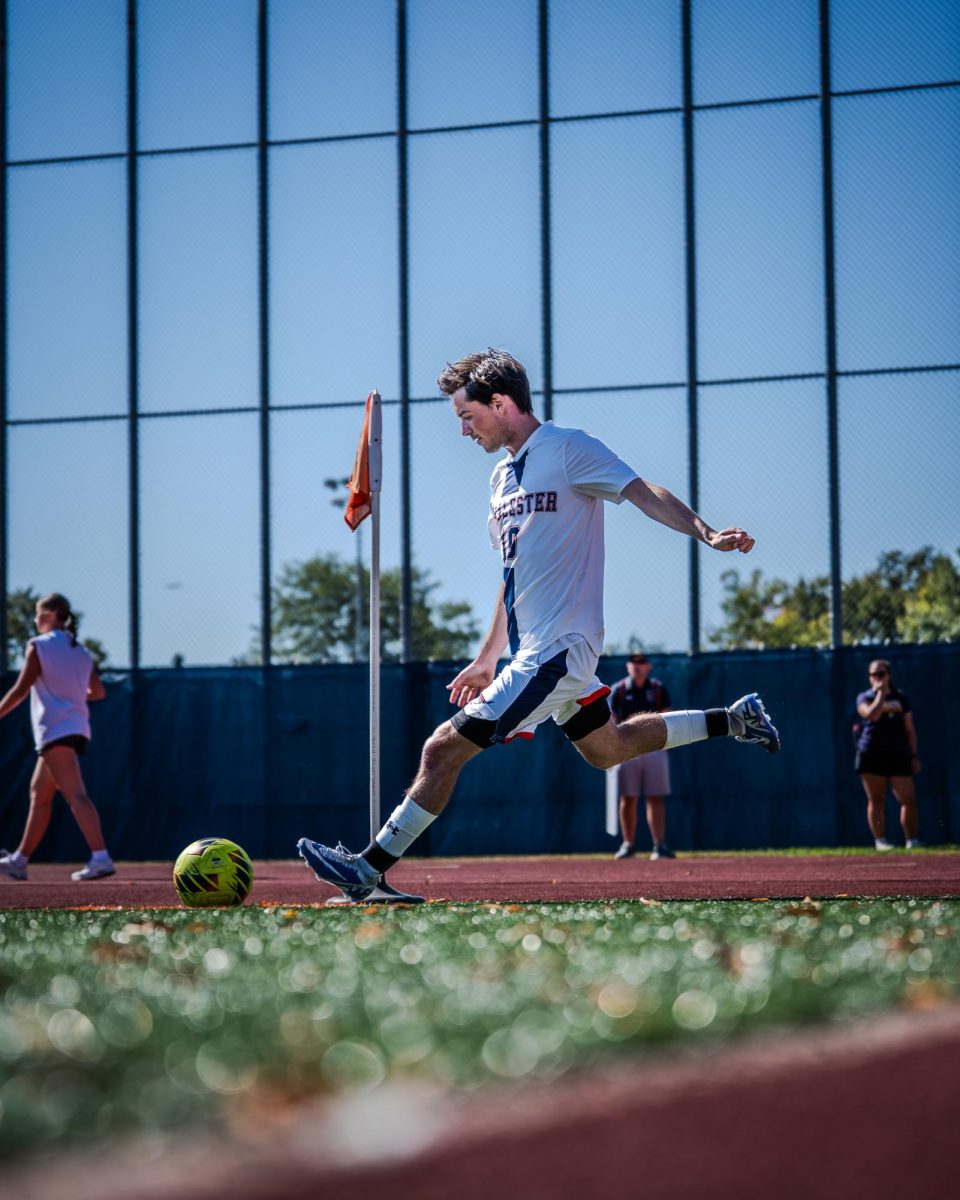It started with a Mary Daley ’27 three-pointer off the assist from Sydnee Smith ’27. A few possessions later, Daley hit a jumper. And then a layup. Just like that, in under four minutes, the Scots had pulled off a 12-2 run to open the fourth quarter against St. Catherine University on Wednesday, Feb. 5.
The Scots came away from that match with a 64-57 win to keep their playoff hopes alive in the Minnesota Intercollegiate Athletic Conference (MIAC). That 12-2 run in the fourth quarter represents a season-long trend for the Scots. That late-third, early-fourth stretch has been the Scots’ sweet spot. Yet even Head Coach Katie Kollar doesn’t have an explanation for these runs.
“If I find out, I’ll let you know,” Kollar said. “Honestly, we measure a lot of stuff, and there’s not really a rhyme or reason to when we click. I think it’s just once you get enough possessions in, you start to get a feel for the game. We also have a lot of people with a lot of experience. So, they understand what it is to play 40 minutes, and they’ve demonstrated in the second half, when it matters, that we can step up, and we can get the job done.”
It happens time and again for the team; a 19-5 run in the fourth against Augsburg University on Jan. 25. A 17-6 run in the third against St. Mary’s University (Minn.) on Jan. 18. A 24-8 run between the third and fourth at St. Catherine University on Jan. 15 the first time the two faced off. A 9-0 run in the third at St. Scholastica on Jan. 4.
These runs don’t happen every game, and they don’t always result in wins (they went 2-2 in the aforementioned games). They do, however, represent the Scots at their best. During these outbursts, Macalester looks like a different team.
“When we go on those big runs,” Daley said, “and we’re scoring a lot, we’re getting a lot of stuff, you hear everyone get a little bit louder. That comes from the bench, that comes from our coaching staff, that comes from the people on the floor, and it just makes things easier, because you don’t get as tired when you have your whole team on your back with you.”
Though these stretches happen with many different units, Daley has been one of their main drivers. After a solid rookie season, she’s become an integral player this year, almost doubling both her points and assists. She currently averages the second-most assists in the MIAC at 3.8 per game.
Her improvement as a playmaker has helped produce these runs. The team’s leaders, Peyton Starks ’25 (who has led the MIAC in scoring for three straight seasons and currently averages 18.6 points per game) and Katherine Norquist ’25 (who is second on the team in points and second in the MIAC in rebounds with 8.0 per game) can score whenever needed. Daley, though, redistributes the wealth, which alleviates the pressure on the seniors.
“If [my teammates] are scoring, [our opponents] are going to be focused on them, so it’ll be easier for me to look for my shots,” Starks said. “But also, basketball is way more fun when everyone’s playing as a team, the ball is moving around and we’re hitting those open shots. So honestly, it’s exciting, and I think it puts us in a way more competitive position, because now teams aren’t just scouting against me or [Norquist], they’ve got to be on the lookout for everyone.”
When the Scots have looked their best this season, though, it hasn’t been their offense that has scorched teams, but their defense, which starts with Sydnee Smith ’27. Though Starks and Norquist lead the team in steals and blocks respectively, and others like Daley and Camille Samuel ’25 are stout defenders, no Scot performs like Smith.
The telltale sign of a Scot run is a stop from Smith. They start in the backcourt — and sometimes end there, too — as she hounds her opponent with her arms and legs in a blur. She moves her feet, closes lanes, jabs at the ball and then recovers. Sometimes it’s a steal or a deflection, but often, it’s a forced travel or a charge or an airball — plays that never appear in the box score.
“[During] those runs, you can see it, but what you don’t recognize is that, in the first half of the game, she’s wearing down their point guard,” Kollar said. “…that’s a really big indicator of those runs in the third and the fourth. The pressure we’re putting on in the first and the second might not necessarily turn into turnovers, but it’s wearing teams down for the second half, and she’s been instrumental in that. There’s nobody that she can’t guard, and I don’t think there’s anybody that wants her to guard her.”
While these runs show promise for the Scots, they are just that: runs. They haven’t translated to wins. Macalester is 10-10 overall and 5-8 in the MIAC. They’re three games behind the last playoff spot with five games left.
Despite improvements upon prior seasons, Macalester sits dead last in the MIAC in three-point percentage, a spot they’ve occupied for three straight years now. If they want to level up, they’ll need to start there, but for now, they can’t do much to change their situation. Though the playoffs may slip through their grasp, Kollar still wants to enjoy the season.
“We just control what we can control,” Kollar said. “We talk a lot about what’s in our boat. What’s in our boat is showing up every day for practice, trying to get better and going to compete in the games we get to play. So, I think if you get too caught up on all the other stuff, then you get stressed. And when you get stressed, usually you don’t play well [or] perform well. So we just focus on one game at a time. We focus on us, and then the chips fall where they may.”














